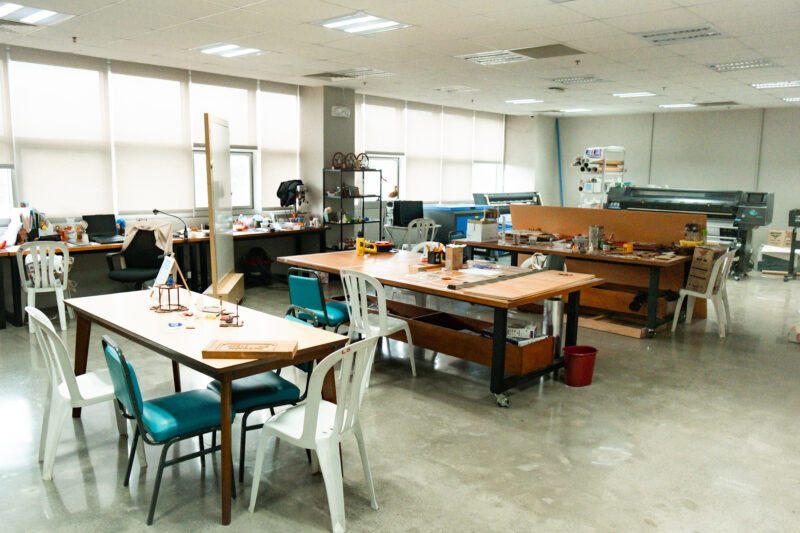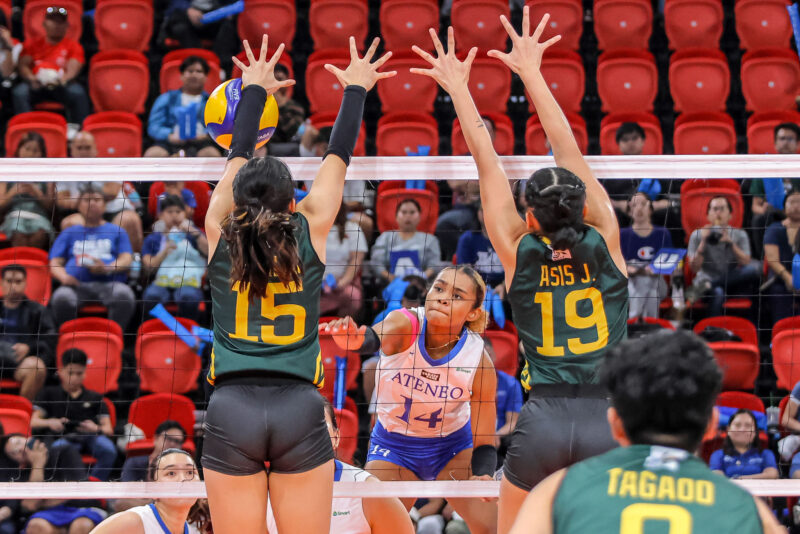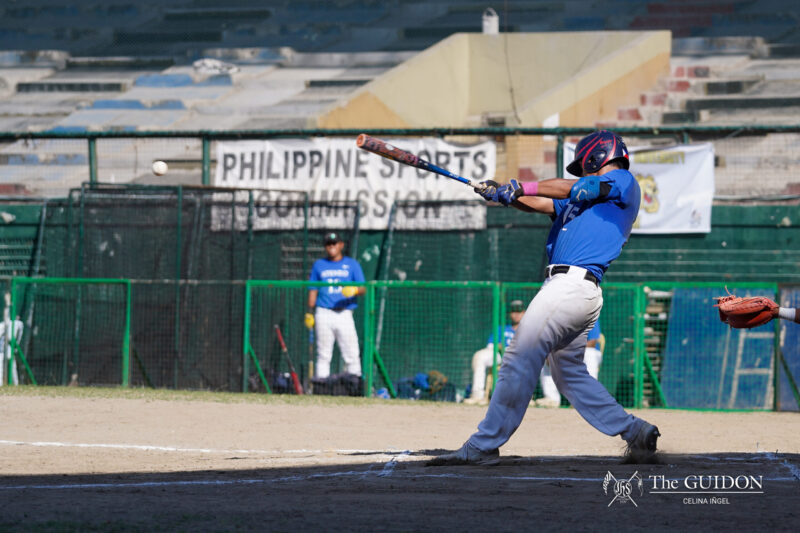MANY ACCOUNTS of the 2019 Metro Manila Pride March talk about the rains that flooded the streets of Marikina on that day, but there’s more to those who were there than their resilience against the storm. With a whopping 70,000 people in attendance—a jump from the previous year’s turn out of 25,000—the Marikina Sports Complex brought together both allies and members of the LGBTQ+ community to celebrate and protest at the largest demonstration of Pride in Southeast Asia to date.
Amid the colorful celebration of love and identity, this year’s Pride went back to its roots by encouraging people to stand for what they believe in. Through recognizing the event’s rich history and establishing a sense of community, the people of Pride propel the movement into an age of resistance by proving the power of solidarity in action, come what may.
Development of dissent
As part of their annual chant, the Metro Manila Pride (MMP) organization begins their call to #ResistTogether with the lyric: “Ang Pride, ang Pride, ang Pride ay protesta! (Pride, Pride, Pride is a protest!)” The charged energy of the hosts who remain high-spirited despite the rain makes the downpour bearable; they even call on the attendees to chant whenever there is a lull in their electric pop playlist and a unified chorus swells up from the crowd.
It is more than merely a chant; it is the organization’s effort to remind attendees of Pride’s beginnings. Under the banner of #ResistTogether, MMP takes on the challenge of using this year’s March to go back to Pride’s dissent.
Fifty years ago, a protest broke out in a Manhattan gay club called Stonewall Inn. The bar was often raided by the police and the employees were usually informed of the authorities’ arrival.
However, on June 28, 1969, they experienced an unplanned raid—and for the first time, Stonewall fought back. Scuffles broke out on the street as police attempted to take patrons to the station for resisting arrest. The next night, people from all walks of life—Stonewall’s patrons, city tourists, and curious bystanders—gathered in front of the bar to show solidarity for the Stonewall victims. On that night, there was a collective demand for the legalization of gay bars and support for gay and drag rights.
The 1969 riots were considered the forefront of the gay liberation movement—Stonewall had inspired allies and members of the LGBTQ+ community all over the city to rise up. A year after Stonewall, the Chicago Gay Liberation organized the first-ever formal Pride March.
On a more local level, we turn to the monumental year of 1994. While some organizations had already stormed the streets before 1994, it was the MMP March that put into action the country’s longest-running annual parade. The Progressive Organization of Gays in the Philippines (ProGay Philippines) and the Metropolitan Community Church (MCC) organized the first-ever LGBTQ+ Pride March in Asia on June 26, 1994 in celebration of Stonewall’s 25th anniversary. The first march happened at the Quezon City Memorial Circle—the event has been an annual gathering in the country for 25 years since.
Cultivating community
According to MMP Communications and Campaign Committee Co-Head Mikhail Quijano, Metro Manila Pride March themes have historically been triennial. Quijano goes on to discuss this by mentioning how the core of 2017’s theme #HereTogether was to establish a sense of community;the goal then was for members of the LGBTQ+ to come together with allies and educate one another about the concept of Pride. 2018 brought out the theme #RiseUpTogether, which Quijano deemed the “next step” in acknowledging the intersectionality of the LGBTQ+ advocacy.
This year’s #ResistTogether theme is what Quijano calls “stepping on the gas.” After successfully rallying people in the past two years, the goal now is to invite Pride-goers to do more—to come together as one in the face of political unrest and injustices.
“As a community, it’s really important to really show that we’re here; that we are a community, a valid community of humans that need the same kind of human protection both in the law and governance,” Quijano insists.
According to Quijano, one common misconception about Pride is that its fight for equality is exclusively for the LGBTQ+ community. However, MMP’s themes from 2017-2019 have made tremendous efforts in proving Pride’s multi-sectorality.
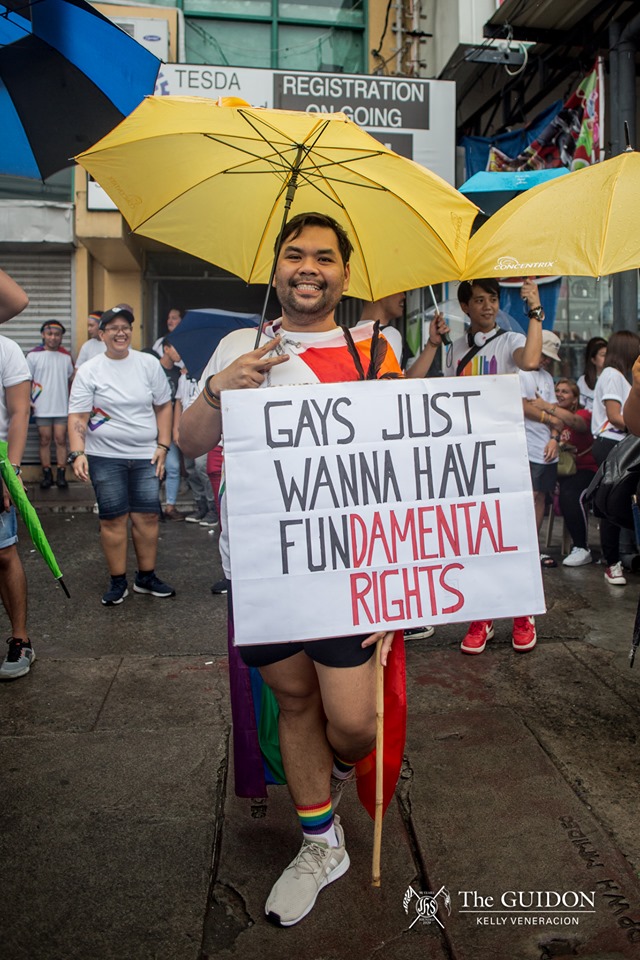
“As you can see, we are trying to establish that there are vulnerable, marginalized groups continuously being oppressed by the system and we want to fight for their rights [to] establish that LGBTQ+ rights are also human rights,” Youth for Human Rights and Development (Youth4HRD) member Christian Gultia says. “These are inherent, basic human rights that should not be granted or revoked by the state; this should be asserted by the people.”
Gultia and Quijano both touch on LGBTQ+ issues like harmful stereotypes and lack of protection in public spaces. Another struggle the two acknowledge is the Sexual Orientation and Gender Identity and Expression (SOGIE) Equality Bill and its inability to hurdle Congress.
The importance of the SOGIE Bill lies in its core policy, where it aims to free all persons from all forms of discrimination. While 18 cities and three barangays in the country already have local ordinances against prejudice, the rest of the country is not so lucky.
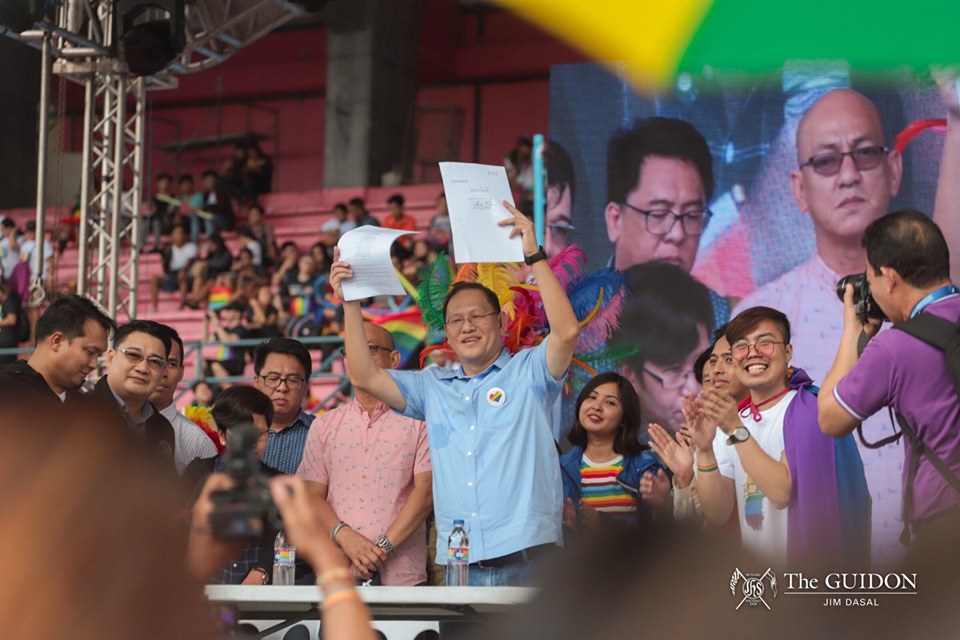
“Hindi pa kasi natatapos ang laban para sa equality or para sa pagkakapantay-pantay ng lahat—that’s why we should always remember that pride is a protest and not just a celebration,” Youth4HRD member Jed Paul Naval says. “Kasi nga hindi pa tapos, eh. Kulang pa yung nangyayari. We’re not reaching for tolerance; we’re reaching for acceptance.”
(The fight for everyone’s equality is not over— that’s why we should always remember that pride is a protest and not just a celebration. It’s far from over. What’s happening is still not enough. We’re not reaching for tolerance; we’re reaching for acceptance.)
As Gultia asserts, the LGBTQ+ community continues to experience various onslaughts “on the basis of their sexual orientations and gender identities.” He emphasizes how it is important now more than ever to establish solidarity with members of the LGBTQ+ community.
Reveling in resistance
The steady downpour does very little to dampen the spirits of the Metro Manila Pride’s attendees. Clad in their vibrant outfits and carrying various colored flags, Pride goers bear placards and signages that are more than meets the eye. Beyond the witty one-liners and brave declarations of sexuality are signs that lobby for an array of causes—be it against federalism or in support of Lumad schools.

“‘Resist Together’ is a call for solidarity. Resistance is about fighting back against human rights oppression, not just the LGBTQ+ community’s oppression,” Quijano asserts. “It’s about really seeing how it’s all an interconnected, interlinked social justice movement.”
Given that there are numerous reasons as to why one may choose to resist, the question now becomes how they stand up for what they believe in.
“I’m a Generation Z kid, so basically most of the things I want to say I can say through social media,” Treat People With Kindness Philippines member Sage* says. “It may seem like slacktivism, but I know that I’m giving information and giving people the opportunity to talk about things through social media and through the technology we have today.”
The term slacktivism refers to the act of showing support for a cause through low-cost and low-risk measures. While some may view social media activism as a lesser form of dissent, Quijano is one of the first to defend resistance as it is.
“Resistance comes in every way, shape, and form,” Quijano says. “There’s not one face to resisting. There’s not one move, or one motion, or one way or kind.”
For Sage, her need to resist stems from the need to celebrate Pride March. Without discrediting the event, she cites how Pride emphasizes that the community is still othered by the larger population. “Celebrating this means that it’s still not normalized to the community,” she says.
Much has changed from Pride’s beginnings at Stonewall, but the core of it all remains: There is a need to resist. Equality for all is the forefront of Pride’s amalgamation of advocacies and it is not something that can be achieved by one person alone—it is a community chanting together, a raised sign that preaches acceptance, a march that chooses to forgive, but never to forget.
When asked about what she wants to say to the people who couldn’t physically be at the March, but are resisting from their own homes, Sage is quick to answer. With a raised fist, she says firmly and surely: “I will march for you.”
*Editor’s Note: To protect their identity and privacy, the interviewee’s name has been changed at their request.
What do you think about this story? Send your comments and suggestions here: tgdn.co/2ZqqodZ





